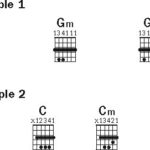For guitar players of all levels, from budding beginners to seasoned strummers, the guitar capo stands out as an indispensable tool. Often underestimated in its simplicity, this small clamp, affectionately known as a “cheater” by some (though unfairly so!), opens up a world of sonic possibilities. Affixed to your guitar’s neck at a chosen fret, the primary function of a capo, derived from the Italian “capotasto” meaning “head of the fretboard,” is to elevate the pitch of your strings. It effectively shortens the vibrating length of the strings, allowing you to transpose a song into a higher key while maintaining your familiar chord shapes. If you’re wondering “where can I find a Guitar Capo Near Me?”, you’re in the right place to discover why this accessory is essential and where to easily acquire one.
Beyond simple transposition, a guitar capo is a fantastic educational tool. Imagine you’re grappling with a song in a challenging key, or perhaps you’re just seeking fresh perspectives on familiar tunes. By placing a capo at different positions on the neck, you can unlock new chord voicings and fingerings, all while staying in the original key. Take a song in E major, for example. By placing a capo on the 7th fret, you can play the entire song using A chord shapes instead of E chords. Suddenly, barre chords that might have felt cumbersome become open chord shapes, and the entire fretboard layout takes on a new dimension. This exercise is invaluable for deepening your understanding of the fretboard and discovering alternative ways to play your favorite songs. Instead of viewing the capo as a shortcut, see it as a key – a key to unlocking fretboard knowledge and expanding your musical vocabulary.
Dismiss any notion that using a capo is somehow “cheating.” This is a misconception that overlooks the practical and artistic applications of this tool. Many of the most celebrated guitarists across genres have utilized the capo to achieve unique sounds and facilitate their songwriting and performance. Think of legendary players like Pete Townshend of The Who, known for his innovative chord voicings and powerful strumming. Or Bob Dylan, the iconic folk singer-songwriter, who frequently employed capos to match his vocal range and create distinctive textures. George Harrison’s timeless classic “Here Comes the Sun” owes its bright and uplifting tone partly to the use of a capo. Keith Richards of The Rolling Stones, and countless blues and folk musicians, have all embraced the capo as a crucial part of their sonic toolkit. These examples demonstrate that the capo is not a crutch, but a versatile tool embraced by masters of the instrument.
Choosing the right guitar capo depends largely on your guitar. The curvature of your guitar’s fretboard is the primary factor. Classical guitars with nylon strings, and some steel-string acoustic guitars, typically have flat fretboards. Most steel-string acoustics and electric guitars, however, feature curved fretboards. For flat fretboards, you’ll need a capo designed to apply even pressure across a flat surface. For curved fretboards, the capo needs to match that curve to ensure consistent pressure across all strings, preventing buzzing or muted strings.
Capo designs vary to suit different playing styles and preferences. The most basic and budget-friendly capos often use a rubber-coated bar to press down the strings and a rubber or elastic strap that wraps around the neck to secure it. While inexpensive and compact, these often require two hands to adjust or reposition, which can be less convenient during a performance. For players who need to make quick capo changes on the fly, spring-loaded clamp capos, like the popular Dunlop Trigger capo, are a game-changer. These allow for swift, one-handed operation, making them ideal for live performances and situations where speed is essential.
Other popular capo designs incorporate adjustable screws, allowing you to fine-tune the clamping pressure for optimal performance and to avoid over-tightening which can cause tuning issues. Roller-based capos combine spring action with a rolling mechanism for smooth and rapid key changes. Beyond standard full capos, specialty capos cater to niche applications. Partial capos, such as the Kyser Short Cut 3-String capo or the Third Hand partial capo, clamp down on only a subset of strings. These open up exciting possibilities for creative tunings and chord voicings, allowing you to play, for instance, an E minor or A chord without needing to fret all the notes with your left hand. The strings above the capo remain open, preserving your familiar scales and fingerings while adding a unique sonic texture.
While electronic transposition devices like the Digitech Whammy or Morpheus Capo pedal exist, offering digital transposition effects, they operate on a different principle than a physical capo. These pedals are significantly more expensive and don’t provide the tactile experience of physically shortening the string length and exploring different positions on the fretboard that a capo offers. The beauty of a capo lies in its simplicity and its direct interaction with the instrument.
If you own multiple guitars – perhaps a 12-string, a nylon-string classical, and a steel-string acoustic – you might find that different capos work best for each. A 12-string guitar, with its doubled strings, typically requires a capo with greater clamping pressure than a delicate nylon-string. There are even specialized capos designed for banjos and mandolins, reflecting the diverse needs of stringed instrument players.
Ready to explore the world of capo possibilities? If you’ve never experimented with a guitar capo, now is the perfect time to discover this essential accessory. Search for “guitar capo near me” to find local music stores or online retailers where you can purchase your first capo and embark on a journey of fretboard exploration and sonic discovery. You might be surprised at the wealth of new musical avenues this simple device can unlock in your playing.

